
UPDATE: Rockwell discontinued the MicroLogix 1500 in May of 2017.
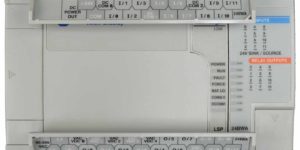 In 1999, five years after the launch of the MicroLogix 1000, the first entry in Rockwell’s second generation of MicroLogix family was released. The MicroLogix 1500 was substantially different from the MicroLogix 1000 in many ways, the most obvious being the fact that it’s Processor was removable from the I/O base.
In 1999, five years after the launch of the MicroLogix 1000, the first entry in Rockwell’s second generation of MicroLogix family was released. The MicroLogix 1500 was substantially different from the MicroLogix 1000 in many ways, the most obvious being the fact that it’s Processor was removable from the I/O base.
Also unlike the MicroLogix 1000, the MicroLogix 1500 supported expansion I/O by way of 1769 Compact I/O modules. These expansion I/O modules made up a rackless I/O system, sliding together using tongue-and-groove slots, and connecting via a retractable bus connector.
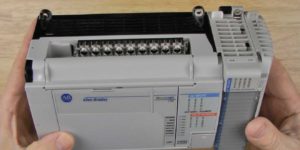 The 1500 programed with the same Windows based RSLogix 500 programming software (version 3.01 or greater) that the SLC-500 and MicroLogix 1000 used, but it could not be programmed with the MicroLogix 1000’s Hand Held Programming Terminal. This was likely done to allow for additional features not supported by the handheld. It was also likely a nod to the fact that by 1999 the use of personal computers for programming automation devices had become commonplace in manufacturing.
The 1500 programed with the same Windows based RSLogix 500 programming software (version 3.01 or greater) that the SLC-500 and MicroLogix 1000 used, but it could not be programmed with the MicroLogix 1000’s Hand Held Programming Terminal. This was likely done to allow for additional features not supported by the handheld. It was also likely a nod to the fact that by 1999 the use of personal computers for programming automation devices had become commonplace in manufacturing.
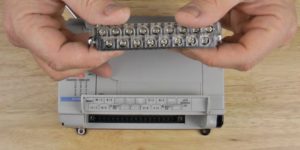 As with the MicroLogix 1000, the MicroLogix 1500’s DC Inputs supported either sinking or sourcing input devices. This was unlike SLC-500 I/O modules for which you had to choose either sinking or sourcing. The MicroLogix 1500 also was the first MicroLogix to support removable terminal blocks to easy in wiring and replacing of failed units.
As with the MicroLogix 1000, the MicroLogix 1500’s DC Inputs supported either sinking or sourcing input devices. This was unlike SLC-500 I/O modules for which you had to choose either sinking or sourcing. The MicroLogix 1500 also was the first MicroLogix to support removable terminal blocks to easy in wiring and replacing of failed units.
The MicroLogix 1500 processors came with a pre-installed, non-removable battery for program retention. Once this battery was drained, users would leave it in place and install a replacement battery under the cover on the front of the processor.
The 1500 was also unique in that is supported a plug-in data access tool, or DAT. This small device was made up of 8 LED digits, 6 function keys, and one 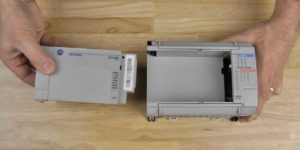 up down rocker button. Adding it to a MicroLogix 1500 processor allowed for quick and easy editing of the processors data table in a similar fashion as the SLC-100’s TCAT and SLC-500’s DTAM did.
up down rocker button. Adding it to a MicroLogix 1500 processor allowed for quick and easy editing of the processors data table in a similar fashion as the SLC-100’s TCAT and SLC-500’s DTAM did.
The first MicroLogix 1500 processor released, the 1764-LSP, had no communications port of it’s own. Instead, to connect a computer or HMI to a MicroLogix 1500 system the user would plug into a Mini-Din communications port that was located on the MicroLogix 1500’s I/O Base. This Mini-Din COMM 0 port was the same form factor as the serial port as found MicroLogix 1000.
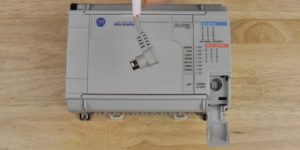 The MicroLogix 1500 I/O base communications port initially supported DF1 Full Duplex, DF1 Half Duplex Slave, and DH-485. However, since this COMM 0 port only supported RS-232, to communicate on DH-485 using RS-485 a 1761-NET-AIC (and a Mini-Din to Mini-Din cable) was needed to convert RS-232 to RS-485.
The MicroLogix 1500 I/O base communications port initially supported DF1 Full Duplex, DF1 Half Duplex Slave, and DH-485. However, since this COMM 0 port only supported RS-232, to communicate on DH-485 using RS-485 a 1761-NET-AIC (and a Mini-Din to Mini-Din cable) was needed to convert RS-232 to RS-485.
Then in the year 2000, Rockwell introduced the series B version of the MicroLogix 1500 along with RSLogix version 4.5. This release added Modbus RTU Slave protocol support as well as full ASCII Read/Write support.
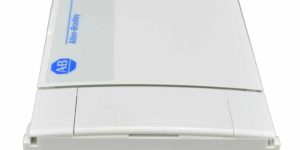 Later in the year 2000, Rockwell released a second MicroLogix 1500 processor, the 1764-LRP. This new processor included it’s own isolated RS-232 9 Pin D-Shell communications port, aka COMM 1. But unlike the “respond only” port that would later be found on “R” models of the MicroLogix 1200, the MicroLogix 1500’s LRP processor serial port was a fully functional.
Later in the year 2000, Rockwell released a second MicroLogix 1500 processor, the 1764-LRP. This new processor included it’s own isolated RS-232 9 Pin D-Shell communications port, aka COMM 1. But unlike the “respond only” port that would later be found on “R” models of the MicroLogix 1200, the MicroLogix 1500’s LRP processor serial port was a fully functional.
The last communications addition came in 2003 when Rockwell released series C of the MicroLogix 1500. This release added support for (among other things) DF1 Half Duplex Master and Modbus RTU Master protocols.
Over time, as Rockwell continued to expand it’s MicroLogix line, many customers began using the MicroLogix exclusively. However, customers still had to buy the expensive RSLogix 500 / SLC-500 programming software even if they were only programming the MicroLogix line. This eventually grew into a point of contention as this software was quite a bit more expensive than many of the MicroLogix models.
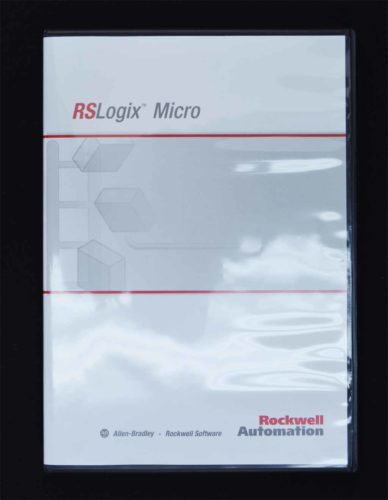 To address this, in 2008 Rockwell released a MicroLogix only version of RSLogix 500, “RSLogix Micro,” for $129. This was a substantial savings over the cost of any version of RSLogix 500. Then a year later they also released a free version of the software, RSLogix Micro Strarter Lite, just for programming the MicroLogix 1000 and 1100.
To address this, in 2008 Rockwell released a MicroLogix only version of RSLogix 500, “RSLogix Micro,” for $129. This was a substantial savings over the cost of any version of RSLogix 500. Then a year later they also released a free version of the software, RSLogix Micro Strarter Lite, just for programming the MicroLogix 1000 and 1100.
After 15 years and the release of newer products which include Ethernet and Online Editing, in addition to the high cost of the MicroLogix 1500’s modular design, it has seen a steady decrease in it’s use.
Personally, I think the many advantages of 1769 expansion I/O warranted a new MicroLogix 1500 processor. One with Ethernet and Online Editing would have been very popular.
But, if ever a model like this was on the drawing board it never materialized as all Rockwell’s future MicroLogix releases were based around the 1762 platform.
For more information about the MicroLogix 1500 visit the manufacturer’s product webpage HERE.
Until next time, Peace ✌️
If you enjoyed this content, please give it a Like, and consider Sharing a link to it as that is the best way for us to grow our audience, which in turn allows us to produce more content 🙂
Shawn M Tierney
Technology Enthusiast & Content Creator
Support our work and gain access to hundreds members only articles and videos by becoming a member at The Automation Blog or on YouTube. You’ll also find all of my affordable PLC, HMI, and SCADA courses at TheAutomationSchool.com.
- FactoryTalk Design Workbench First Look, CCW Comparison - December 19, 2025
- Drew Allen of Grace Technologies on Automation, Safety, and More (P256) - December 17, 2025
- Robotics in Warehouse Automation with Erik Nieves of Plus One Robotics (P255) - December 10, 2025

Discover more from The Automation Blog
Subscribe to get the latest posts sent to your email.



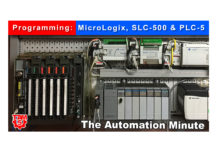

I have a question about the micrologix 1500 series B and a project that I am working on. I have recently installed a CMORE HMI onto a machine. The only Micrologix communication cable uses the COMM 0 port on the Micrologix via the 8-pin MINI-DIN connector. This means I can no longer use the Access port mounted on the outside of the machine because it requires access to COMM 0 on the PLC. Is there an adapter that will allow me to use the existing access port cable with the 8-pin MINI-DIN to plug into the COMM 1 9-pin D style serial port?
Good morning,
With the original 1500 the only port was the 8 pin mini din on the 1764 base.
Question – Do you have the newer 1769-LRP processor with the 9 Pin D Shell serial port?
If you do, it would likely be easier to use a standard serial cable between the HMI (assuming it has a RS232 9 pin port) and 1500, and it would be a much cheaper cable.
Note – Consult your HMI manual for the right pinout – it’s likely DTE to DCE / crossover / Null Modem.
As far as a Mini Din to 9 pin D shell adaptor, check with your access port mfg, as those made for other uses likely will require a null modem adaptor and/or gender changer to work.
Shawn